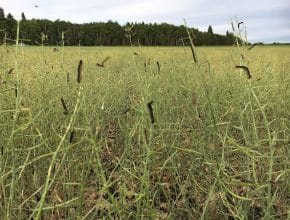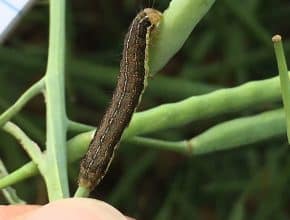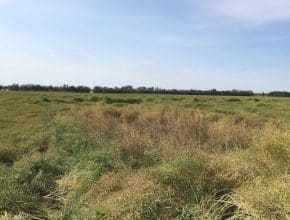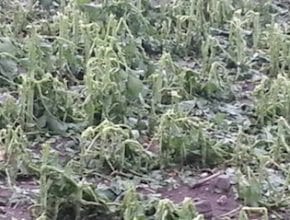Home / Canola Watch / July 26, 2018 – Issue 17
-
The three most common pod munchers are bertha armyworm, diamondback moth larvae and lygus bugs. Hot spots can sometimes be isolated to specific fields, so check each field. Before spraying, make sure insects counts are at or above economic thresholds. Applications made when insect numbers are below thresholds will not provide a positive return on investment and can do unnecessary…
-
Scout for bertha armyworm, lygus bugs and diamondback moth larvae on pods, but only spray if insects counts are at or above economic thresholds. Try this quiz to brush up on thresholds…
-
I has been a hot growing season so far, as shown on this map. Hot days will be a major reason for missing pods this year…
-
The combine optimization tool at www.canolacalculator.ca will help farmers set the combine to keep losses as low as possible while finding a balance with productivity and grain quality…
-
Take a look at the roots of plants that are showing unusual amounts of heat and moisture stress. These plants may be facing premature wilting and even death due to clubroot, and mounting stress from the environment can make these plants stand out even more…
-
Every crop protection product has its own pre-harvest interval (PHI) — which is the time required between spraying and cutting the crop. PHI is also often different for the same product used on different crops. The quick and simple calculator at www.spraytoswath.ca helps you find a canola fungicide, insecticide or pre-harvest herbicide that fits your timeframe…
-
The nominal threshold for canola is seven to 12 per square metre. This article provides tips on how to scout…
-
The later hail occurs in the season, the more damage it can do to yield. Crops not mowed down by hail can see some yield recovery…
-
Never use malathion to prepare canola for storage or treat bins in which you plan to store canola. Malathion residue can linger in bins for up to six months after treatment and can be transferred from the bin to canola seed, putting marketability at risk…







